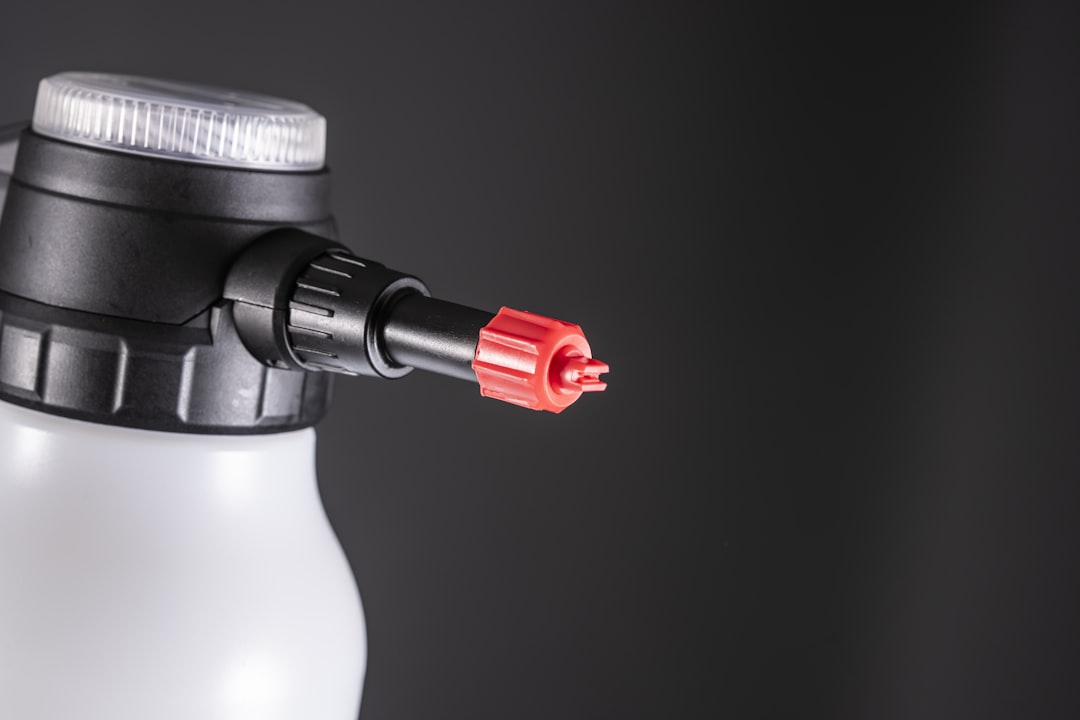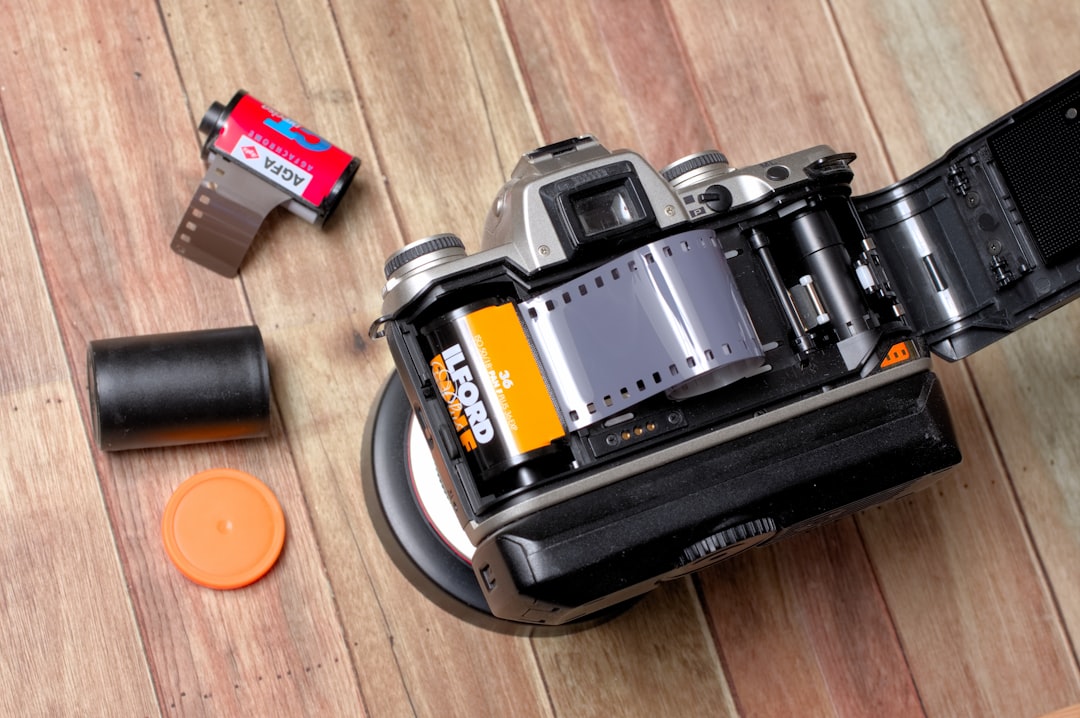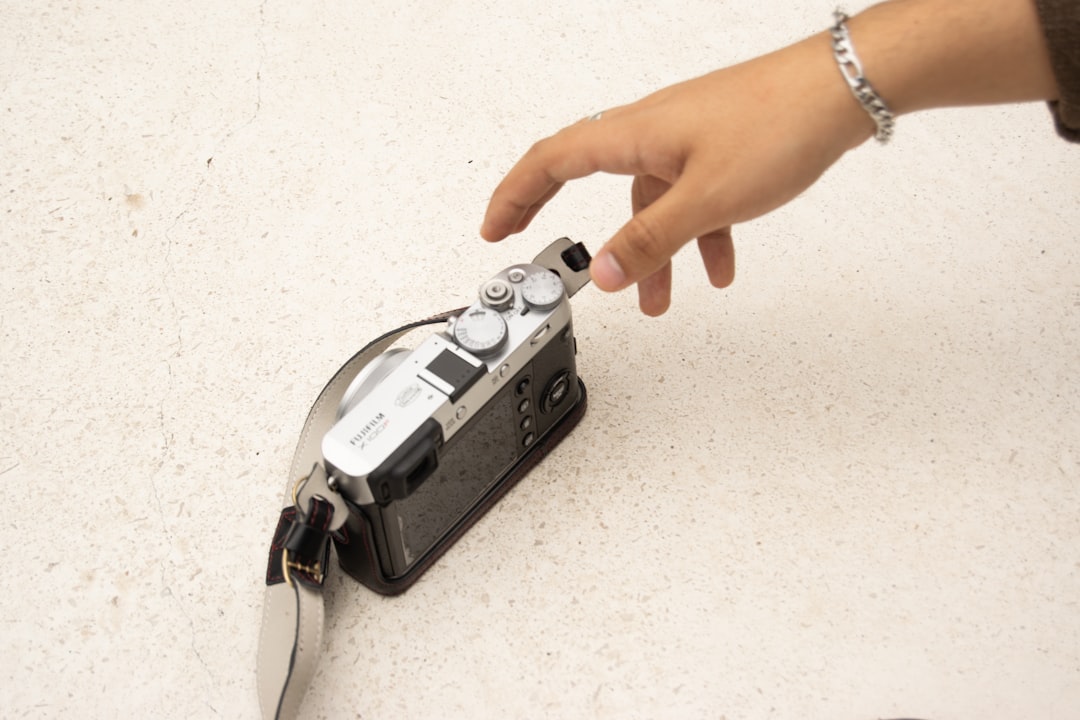

Engage prospects with a scan and streamline customer engagement with FREE QR code marketing tools by Sona – no strings attached!
Create a Free QR CodeFree consultation

No commitment

Engage prospects with a scan and streamline customer engagement with FREE QR code marketing tools by Sona – no strings attached!
Create a Free QR CodeFree consultation

No commitment
Vacuum cleaner repair services are struggling to bridge the gap between offline interactions and meaningful digital engagement. Traditional methods such as flyers, paper forms, and printed troubleshooting guides often lack convenience for customers and fail to capture the marketing insights that drive growth. Prospects go untracked, missed leads slip through the cracks, and offline engagement is rarely measured, leaving providers dependent on outdated techniques.
QR codes have evolved into essential tools for connecting vacuum cleaner repair service providers directly with their customers. Instead of relying on inefficient manual processes, QR codes make it easy to share repair resources, book appointments, and gather feedback, streamlining the lead capture process, accelerating bookings, and encouraging repeat visits without requiring customers to download apps or complete lengthy online forms. For service teams in cleaning industries, see practical ideas from QR codes for cleaners and broader tactics in QR codes in marketing.
By leveraging QR codes, providers address missed follow-up opportunities and unseen customer interest while gaining the ability to measure marketing ROI. Each scan generates actionable data and intent signals, helping businesses optimize engagement and enhance the customer journey across both physical and digital channels. For deeper strategy on buyer signals, see Sona’s blog post The Essential Guide to Intent Data.

QR codes bridge the gap between analog and digital for vacuum cleaner repair services, making every physical touchpoint, from work order receipts to in-store signage, a potential entryway to digital engagement. When a customer enters your shop with a faulty upright or robot vacuum, every moment can become an opportunity. The key is to design QR-powered flows that reduce friction, shorten wait times, and capture intent so you can act on it in real time. See Sona QR’s product overview.
Start by replacing outdated analog processes. Paper service request forms can be replaced with a QR that opens a prefilled intake form, allowing customers to complete details while waiting. Printed troubleshooting brochures can become dynamic content accessed via QR, letting you update model-specific tips without reprinting. A QR on a service receipt can guide customers to schedule a follow-up appointment or leave feedback, closing the loop that typically goes unmeasured.
Modern QR solutions automate these aspects, from unique code generation per repair event to CRM integration, ensuring that high-value engagements are visible, attributable, and actionable. Start creating QR codes for free.

Vacuum cleaner repair services face operational and marketing hurdles that directly impact revenue. Many customers see a flyer, pick up a brochure, or glance at a counter sign, yet never take the next step. Without a clear digital bridge, your best opportunities remain invisible and unmeasured. For measurement strategy across print and physical media, read Sona’s blog post The Essential Guide to Offline Attribution.
QR codes create that bridge by giving customers immediate next steps while providing your team with the data needed to follow up. Instead of hoping a customer types a URL later, a scan triggers action in the moment. This is particularly important for time-sensitive intents such as booking an appointment after a product failure or consulting a model-specific guide before deciding on a repair.
For vacuum cleaner repair providers, QR codes are both a customer convenience and a measurement engine. They shorten the path to conversion while illuminating who is engaging, where, and why.
QR codes offer flexible formats suited to the realities of a repair shop environment, where speed, relevance, and clarity are crucial. The right format can dramatically increase engagement and reduce friction for your customers.
For most repair scenarios, dynamic QR codes are recommended. They allow you to edit destinations without reprinting and produce granular analytics for optimization. With Sona QR, you can generate, manage, and update all these formats from a single dashboard while feeding data into your CRM or marketing tools.

Vacuum cleaner repair service providers often have multiple offline touchpoints that influence customer behavior. The challenge is converting those moments into digital actions that are trackable and attributable. Start by mapping your physical environment and customer journey, then place QR codes at points of high intent.
Consider the contexts where customers pause or need next steps. Intake desks are perfect for Scan to start your repair intake, while repaired units can return to customers with QR-labeled service summaries and maintenance tips. Each of these placements can reduce friction for customers and increase visibility for your team.
Smart deployment ensures every scan becomes a signal. By identifying which physical placements produce the most qualified actions, you can prioritize investments where they yield the strongest outcomes.

QR codes align perfectly with the core tasks of a repair business. They lower customer effort, streamline internal processes, and create a clean data trail for analysis. Focus on use cases that directly improve conversion and retention.
These use cases improve both the customer experience and business performance. Troubleshooting resources can reduce support load by a measurable percentage, while QR-driven appointment bookings often lift conversion rates compared to phone-only scheduling. Meanwhile, structured feedback and referral programs can increase review volume and lead quality with minimal extra effort.
Each scan reveals context: what someone needs, where they are, and what they did next. By deploying QR codes at strategic touchpoints, you capture data to segment audiences and personalize communications. The result is smarter retargeting that respects intent and timing.
Think in terms of journey stages. Awareness scans might come from window decals or neighborhood flyers; consideration scans often come from troubleshooting pages; conversion scans often occur from booking prompts on receipts or service desk signage. Treat each scan as a tag that adds behavioral detail to that contact in your database.
For vacuum cleaner repair services, helpful audience distinctions include the vacuum type and age, warranty status, frequency of service, and whether the customer is a first-time visitor or a loyal client. By tying scan signals to these attributes, your communications become more relevant and more effective.
QR codes are connective tissue between your offline presence and digital systems. They make legacy media measurable and interactive while powering sophisticated follow-ups. When integrated across channels, QR codes give you a unified view of engagement and a consistent path to conversion.
Repair shops typically rely on printed collateral, storefront visibility, local mailers, and word of mouth. QR codes enhance each channel by reducing friction and providing data you can act on. They also let you test offers, track performance, and scale what works with confidence.
With Sona QR, you manage codes across all these channels from one dashboard. You can monitor performance, update destinations, and push scan data into your CRM and ad platforms to build a truly connected offline-to-online funnel.
A successful QR strategy balances customer convenience with operational rigor. Use the following steps to plan, launch, and optimize your campaigns with clarity and confidence.
Start by identifying your highest-friction moments and most valuable outcomes. Choose one or two use cases with clear business goals such as increasing appointment bookings, capturing post-service feedback, or reducing service desk wait times.
Your choice of static or dynamic codes affects flexibility and measurement. Dynamic codes are best for campaigns where you expect updates, testing, or deep analytics.
Visual clarity and a strong call to action drive scans. The best designs are consistent, branded, and placed in contexts with good lighting and scanning distance.
Roll out QR codes where they will be seen and used. Start with high-traffic, high-intent touchpoints, then expand to additional placements once you validate results.
Measurement turns QR scans into business intelligence. Treat every deployment as an experiment to be iterated and improved.
Vacuum cleaner repair teams frequently struggle to connect offline engagement to revenue. Without the right tools, you see a poster go up or a flyer go out, but you cannot tell whether it drove appointments or repeat visits. QR codes fill that measurement gap and, paired with the right platform, connect scans to outcomes.
The objective is to move from raw scan counts to a view of pipeline and revenue influence. That requires consistent tagging, clean destinations, and integration with your CRM and attribution tools. When executed well, you can quantify ROI by placement and message, then invest with confidence.
Modern tools make it possible to consolidate these insights and act on them. Sona QR captures real-world engagement, and Sona.com converts that engagement into actionable revenue insights.
Once your first codes are live, small refinements can lead to outsized gains. Focus on clarity, consistency, and automation so that each scan triggers a meaningful step forward in the customer journey.
Prioritize channels where customers already interact with your brand. Receipts, work orders, and equipment labels are high-trust surfaces. Combine them with short, benefit-driven CTAs that tell customers exactly what they get after the scan.
Creative deployment ideas can also make a difference. For instance, place a QR on the dust bag packaging for Scan for replacement bag sizes and reorder options, or include a QR on invoices for Scan to pay and schedule your maintenance check in one step. These small touches compound into a smoother experience and stronger measurement.

Seeing how peers deploy QR codes can spark ideas and shorten your path to results. The following examples illustrate how QR codes connect offline actions to digital outcomes while advancing both customer experience and business performance.
A national repair chain labels every serviced vacuum with a dynamic QR code that links to that model’s maintenance guide and a post-service survey. When owners scan, the chain captures engagement data like time since service, device type, and location. The chain reports increased review volume, reduced follow-up calls, and more timely maintenance bookings. For inspiration on device-linked experiences, explore vacuum QR codes.
Local centers often tackle walk-in anonymity with QR codes on technician uniforms and window decals. Customers can scan to book, check queue status, or view FAQs while waiting. The result is shorter perceived wait times, better queue management, and higher booking conversion as customers act while motivation is high.
These approaches are practical, low cost, and scalable. They also reinforce a modern, customer-first brand image that can differentiate your shop in a competitive local market.
Practical execution details often determine whether a QR program flourishes or stalls. The following best practices help maximize adoption and ROI while avoiding common missteps that reduce scan rates or muddy your data.
QR codes are more than just a quick-access utility for vacuum cleaner repair services. They provide a practical solution for persistent operational and marketing challenges by transforming each offline touchpoint, from service intake to post-repair follow-up, into a measurable digital action. This shift gives you visibility into engagement, reduces manual bottlenecks, and guides customers toward faster, more satisfying outcomes.
From increasing appointment bookings by surfacing hidden interest, to reducing support load with model-specific guides, QR codes help repair professionals streamline workflows, personalize outreach, and gain full visibility into the customer lifecycle. With Sona QR handling code generation, dynamic updates, and analytics, and Sona.com connecting scans to pipeline and revenue, you can convert real-world interest into repeatable growth. Every scan becomes a signal you can act on, enabling better retargeting, smarter campaign optimization, and stronger customer loyalty.
QR codes have revolutionized vacuum cleaner repair services by turning routine customer interactions into seamless, data-driven opportunities. Whether it’s enabling quick access to repair guides, scheduling services, or providing instant troubleshooting support, QR codes streamline the customer journey while capturing valuable engagement insights. Imagine your customers effortlessly scanning a code to get expert help or book an appointment—boosting satisfaction and driving repeat business.
With Sona QR, you can create dynamic, trackable QR codes tailored for every touchpoint in your repair service process. Update information instantly without reprinting, monitor scan activity in real time, and connect each interaction to measurable outcomes like customer retention and service growth. No more guesswork—just smarter, more effective customer engagement.
Start for free with Sona QR today and transform every scan into a loyal customer, a completed repair, or a powerful referral.
You can access model-specific troubleshooting guides via QR codes placed on serviced vacuums or counter displays, which provide checklists and videos to help diagnose and resolve common issues.
Common issues often relate to clogged filters or worn parts; these can be addressed by using QR codes to access troubleshooting guides, parts catalogs, and booking repair appointments for professional service.
You can scan QR codes found on repair shop signage, receipts, or promotional materials which link to booking forms and contact details, or save the shop’s contact info via vCard QR codes for easy access.
Costs vary depending on the issue and parts needed; QR codes can connect you to estimate request forms or direct communication channels to get accurate pricing from your repair provider.
Use QR codes on equipment labels or service summaries to access maintenance tips, safety instructions, and model-specific guides that help you perform timely upkeep and reduce repeat repairs.
QR codes replace paper forms and printed guides with digital flows that let customers book appointments, access troubleshooting, and provide feedback easily, while allowing providers to track and act on engagement data.
Useful QR codes include web links to troubleshooting pages, contact forms for inquiries, vCard saves for shop contacts, SMS or email triggers for quick requests, Wi-Fi access codes, and app download links.
By deploying dynamic QR codes with unique tracking parameters, shops can monitor scan counts, locations, devices, and conversions to measure ROI and optimize campaigns with tools like Sona QR.
Place QR codes at high-intent points such as intake counters, repair tickets, equipment labels, waiting areas, and packaging inserts, ensuring good visibility, clear CTAs, and easy scanning.
They use QR codes to collect feedback, encourage referrals, provide maintenance resources, and enable easy appointment booking, creating a seamless experience that encourages repeat visits and positive reviews.
By integrating QR codes on print materials, signage, and packaging, providers guide customers to booking forms, troubleshooting guides, and feedback surveys, making offline touchpoints measurable and actionable.
Ensure QR codes are branded, clear, and placed in well-lit areas with appropriate size, include concise calls to action, test across devices and lighting conditions, and optimize landing pages for speed and simplicity.
Dynamic QR codes allow updating destinations without reprinting, provide detailed analytics, support retargeting, and enable integration with CRM systems for improved measurement and marketing agility.
Yes, QR codes replace paper intake forms with digital ones that customers can fill out on their phones, speeding check-ins and reducing manual data entry for staff.
They place QR codes on invoices, packaging inserts, or exit signage that link to review pages or referral forms, capturing satisfaction and encouraging word-of-mouth growth.
Using platforms like Sona QR, scan data can trigger automated emails or SMS messages, such as appointment reminders or discount offers based on the customer’s scanned content.
Avoid poor placement, cluttered visuals, lack of privacy information, static-only codes without analytics, and failure to test across devices and environments to ensure high scan rates and data quality.
Use Sona QR's trackable codes to improve customer acquisition and engagement today.
Create Your FREE Trackable QR Code in SecondsJoin results-focused teams combining Sona Platform automation with advanced Google Ads strategies to scale lead generation

Connect your existing CRM

Free Account Enrichment

No setup fees
No commitment required

Free consultation

Get a custom Google Ads roadmap for your business






Launch campaigns that generate qualified leads in 30 days or less.
